Image of West End Avenue before free overnight street parking existed in New York City.
Created by the DOT, the below diagrams show how many parking spaces will be repurposed as public space by the Street Improvement Project (SIP) on each section of W 103rd Street Open Street.
As DOT reports in this final image, 15 total parking spaces across 3 blocks will be repurposed, and two new parking spaces will be added, for a net total of 13 “lost”/affected parking spaces once the SIP is in place.
Once construction by the Toll Brothers and others is complete, additional parking spaces will become available. This means that the parking spaces available on the street after SIP completion will be roughly equivalent to what was available prior to the SIP.
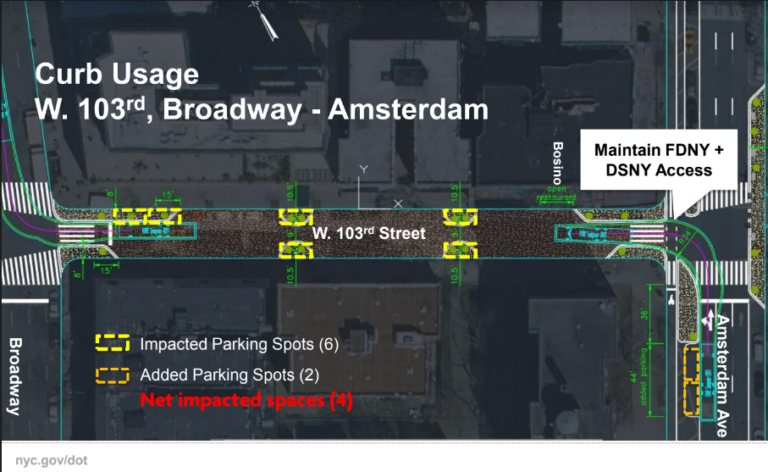
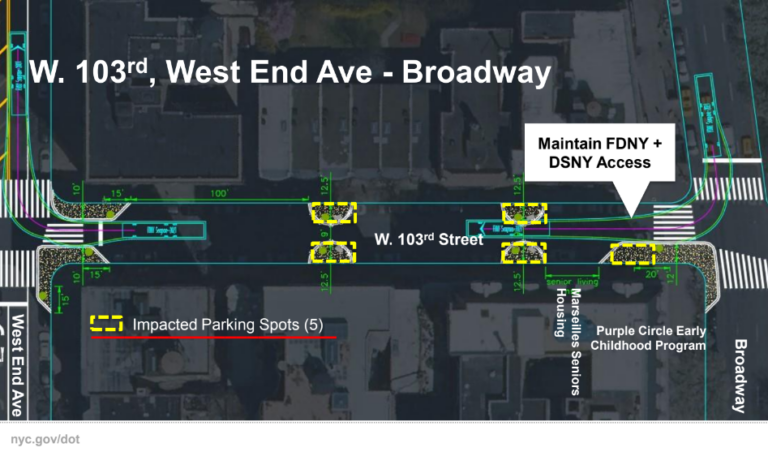
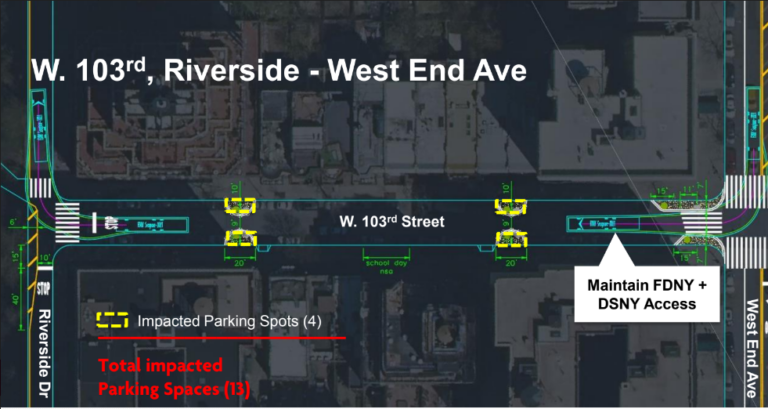
Most of the new public spaces being created under the SIP results from 4 new “hugs” (pictured below) planned for each of the 3 blocks. The pavement marking below show a semi-circle of white paint on the pavement – the size of one average parking space — 20 feet. The intention of these hugs is to create a visual reminder to cars driving down the street to slow down and to make it easier for walkers to cross onto the street from the sidewalk and visa versa.
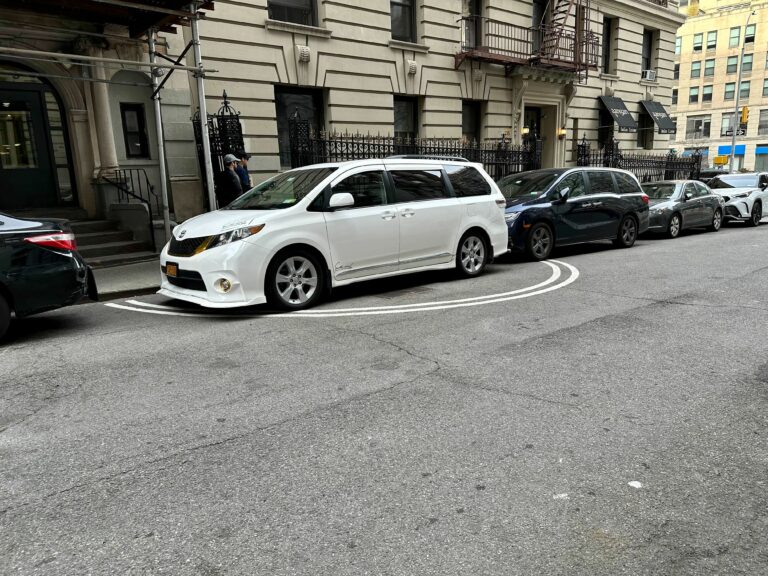
73% of Community Board 7 households (the CB where W 103rd Street is located) do not own cars. 27% do. On average across NYC, 55% of households own a car. This means that CB7 is more transit-centric than New York City overall, making it an optimal place for SIPs and Open Streets.
The majority of residents in a transit-rich neighborhood like CB7 get around by walking, biking, mass transit, or taxis/ride-hails, or Access-a-Ride.
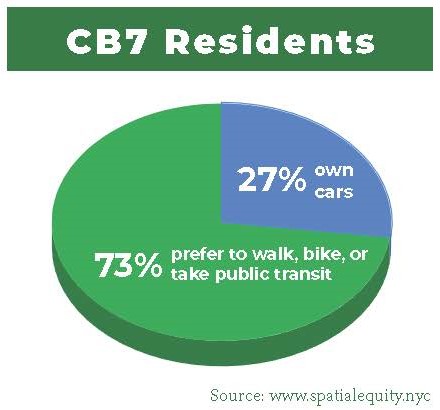
Several studies document the popularity of repurposing the public space now used for free curbside parking. In 2021 Transportation Alternatives commissioned studies of New York City’s Open Street program and residents’ opinions on them. Results from those studies can be seen below.
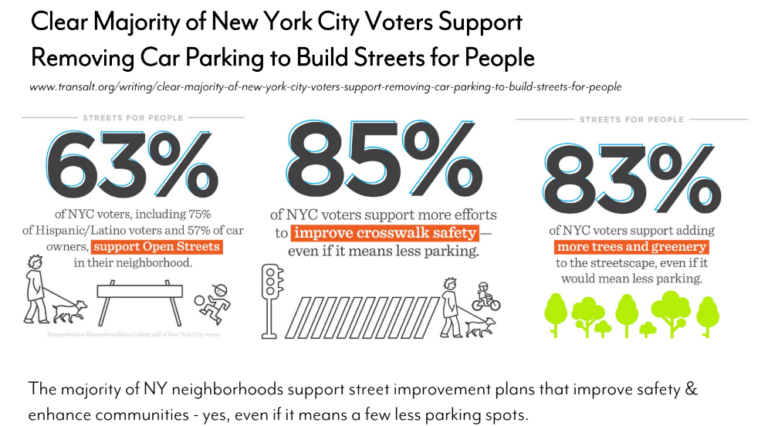
The vast majority of people prefer Open Streets, safer crosswalks, and more public space over parking spaces.
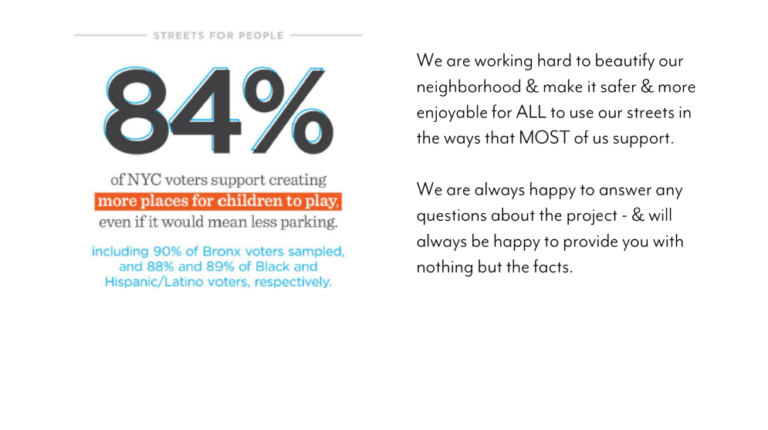
Double-parked cars, sidewalks crowded by trash, and speeding cars create street and sidewalk conditions that prevent emergency vehicles from moving swiftly down the street and are dangerous for elderly residents, young families, and anyone crossing the street when a driver rounds the corner too quickly. See the below photos of double-parked cars blocking fire trucks and ambulances, as well as crowded sidewalks reducing pedestrian space on the UWS and W 103rd.
Conversely, the Open Street’s barriers (now planters) do not prevent emergency and/or large vehicle access. Photos of such vehicles turning through barricades can be found below as well.
These planters are part of a “daylighting” effort by New York City to create safer crosswalks. Daylighting is a tactic of design interventions, ranging from specific paint on streets, to curb extensions, to large planters like those on W 103rd Street, which make intersections brighter and easier to see, reducing the opportunity for pedestrian injuries and illegal driving/speeding. Daylighting at intersections has proven to be key for Vision Zero efforts in other cities introducing traffic safety campaigns, such as Jersey City and Hobken.
The Open Street’s barriers are not blocking access to W 103d Street – Double parked cars are. Once the Department of Transportation’s Street Improvement Plan is in place, double parking will be further discouraged and these dangerous situations will be reduced.
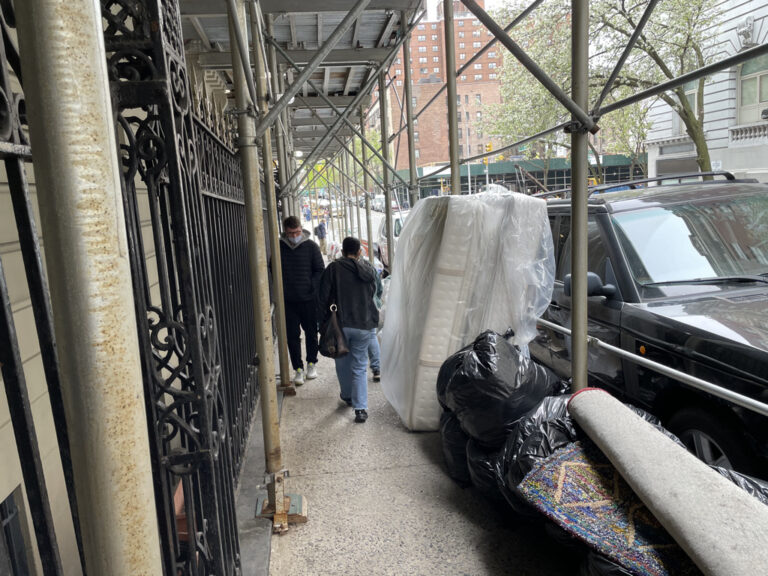
The Street Improvement Plant will create a more pedestrian-friendly space, ensuring that all members of our community can move across W 103rd Street.
All DOT plans take the dimensions of all vehicles, including USPS trucks, current emergency vehicles, and models of future emergency vehicles into consideration when designing street improvements. All will be able to drive down W 103rd easily once the SIP is implemented. These barriers (now planters) simply remind cars to slow down and drive carefully, keeping drivers alert for pedestrians, preventing future emergencies and injuries.
Below, you can refer to articles, books, and podcasts with information on parking/car culture and street space. Check back for more soon!